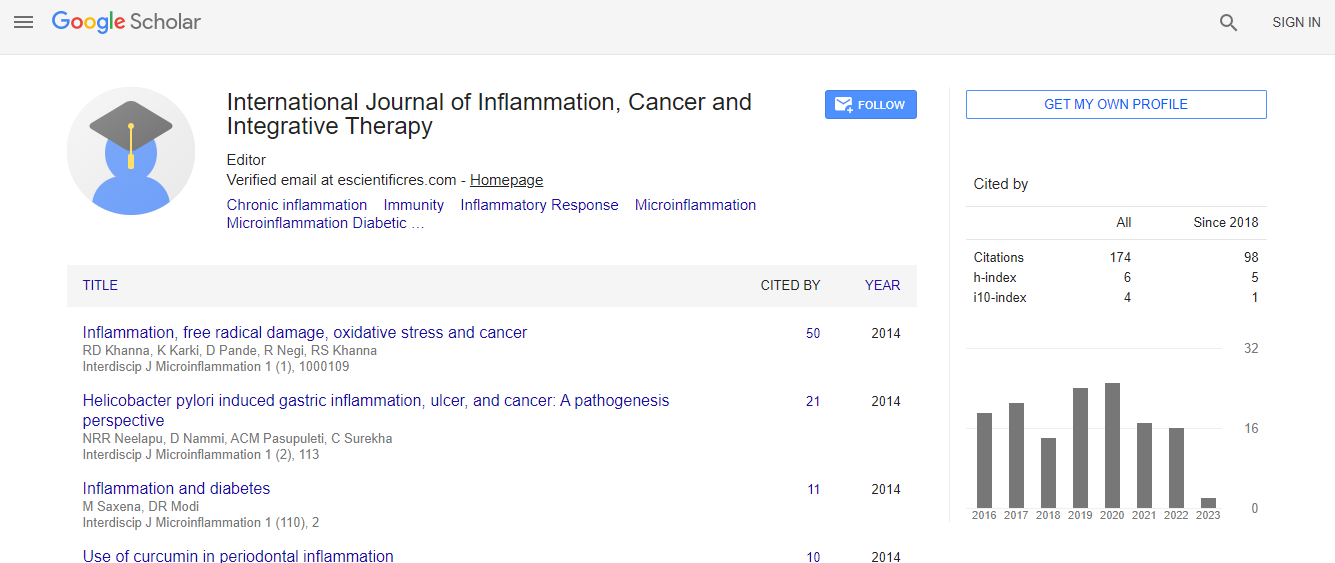Short Communication
Microscopic Colitis: An Overview
Ashraf MU*, Aslam M, Zaheer MS, Rabbani MU, Khan SA and Ashraf J
J N Medical College, AMU, Aligarh, Uttar Pradesh, India
- *Corresponding Author:
- Dr. Muhammad Uwais Ashraf
J N Medical College, AMU, Aligarh
Uttar Pradesh, India,
Tel: +6096275587
E-mail: uwaisashraf@gmail.com
Received date: June 2, 2014; Accepted date: September 23, 2014; Published date: September 25, 2014
Citation: Ashraf MU, Aslam M, Zaheer MS, Rabbani MU, Khan SA, et al. (2014) Microscopic Colitis: An Overview. Microinflammation 1:108. doi: 10.4172/2381-8727.1000108
Copyright: © 2014 Ashraf MU, et al. This is an open-access article distributed under the terms of the Creative Commons Attribution License, which permits unrestricted use, distribution, and reproduction in any medium, provided the original author and source are credited
Abstract
Microscopic colitis may be defined as a clinical syndrome, of unknown etiology, consisting of chronic watery diarrhea, with no or minimal changes seen on colonoscopy. Therefore, a definitive diagnosis is only possible by histology. The epidemiological characteristics of this disease have become more elaborate over the past few years, and most of the data has come from Western countries. Microscopic colitis includes two histological subtypes [collagenous colitis (CC) and lymphocytic colitis (LC)] with no differences in clinical presentation and management. Collagenous colitis is characterized by a thickening of the sub epithelial collagen layer which is not seen in LC. The main feature of LC is an increase in the density of intra-epithelial lymphocytes in the surface epithelium. A number of theories have been proposed over the years regarding the pathogenesis of this entity, including the role of luminal agents, autoimmunity, eosinophils, genetics (human leukocyte antigen), biliary acids, infections, alterations in fibroblasts, and drug intake; drugs like ticlopidine, carbamazepine or ranitidine are especially associated with the development of LC, while CC is more frequently linked to cimetidine, non-steroidal anti-inflammatory drugs and lansoprazole. Recent evidence has added new pharmacological options for the treatment of microscopic colitis: the role of steroidal therapy, especially oral budesonide, has gained popularity, as well as immunosuppressive agents such as azathioprine and 6-mercaptopurine. The use of anti-tumor necrosis factor-α agents, infliximab and adalimumab, constitutes a new, interesting tool for the treatment of microscopic colitis.

 Spanish
Spanish  Chinese
Chinese  Russian
Russian  German
German  French
French  Japanese
Japanese  Portuguese
Portuguese  Hindi
Hindi 
